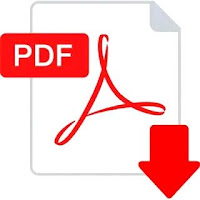Understand what a recession is, how it’s defined by GDP and economic activity, and its causes like asset bubbles or high interest rates. Learn its impact on jobs, markets, and how to prepare.
What is a Recession? Understanding Economic Downturns
The term “recession” frequently pops up in economic discussions and news headlines, often accompanied by a sense of unease. But what exactly constitutes a recession, and how does it impact you? Far from just a scary word, a recession signifies a significant downturn in economic activity, affecting everything from job markets to your personal finances.
This article will break down the definition of a recession, how it’s identified, its common causes, and what its implications are for individuals and the broader economy.
Defining a Recession: More Than Just a Feeling
At its core, a recession is a period of significant economic contraction. While there’s no universally agreed-upon, single-metric definition, the most widely accepted standard comes from the National Bureau of Economic Research (NBER) in the United States.
The NBER defines a recession as: “a significant decline in economic activity spread across the economy, lasting more than a few months, normally visible in real GDP, real income, employment, industrial production, and wholesale-retail sales.”
In simpler terms, it’s not just one bad quarter for a particular industry. It’s a broad-based slowdown affecting multiple facets of the economy, sustained over a period.
The “Two Consecutive Quarters” Rule of Thumb
While the NBER’s definition is comprehensive, many economists and media outlets often use a simpler, though less precise, rule of thumb: two consecutive quarters of decline in real Gross Domestic Product (GDP).
- Gross Domestic Product (GDP): This is the total monetary or market value of all the finished goods and services produced within a country’s borders in a specific time period. “Real GDP” is adjusted for inflation to give a truer picture of economic growth.
If a country’s real GDP shrinks for two quarters in a row, it’s often informally declared to be in a recession. However, the NBER looks at a broader range of indicators before making an official determination, often after the recession has already begun or even ended.
What Causes a Recession? Common Triggers
Recessions don’t just happen out of the blue; they are typically triggered by a combination of factors that disrupt the delicate balance of supply and demand, confidence, and financial stability.
1. Sudden Economic Shock
An unexpected event can quickly derail economic activity.
- Examples: A major natural disaster, a pandemic (like COVID-19), a sudden geopolitical crisis (e.g., an oil supply shock), or a significant terrorist attack. These events can disrupt supply chains, reduce consumer spending, and halt production.
2. Asset Bubbles Bursting
Excessive speculation can lead to asset prices (like housing or tech stocks) soaring far beyond their intrinsic value. When these bubbles burst, the sudden drop in wealth can lead to widespread financial distress.
- Example: The 2008 financial crisis was largely triggered by the bursting of the housing market bubble.
3. High Interest Rates / Tight Monetary Policy
Central banks (like the U.S. Federal Reserve) raise interest rates to combat high inflation. While necessary to cool an overheated economy, excessively high rates can make borrowing too expensive, stifling business investment and consumer spending, potentially pushing the economy into a recession. This is often referred to as a “hard landing.”
4. Reduced Consumer Confidence & Spending
If consumers become pessimistic about the future economy, they tend to reduce spending and save more. Since consumer spending is a major component of GDP, a widespread drop can lead businesses to cut production and lay off workers, further dampening demand.
5. Overproduction and Underconsumption
If businesses produce more goods than consumers are willing or able to buy, inventories build up. This leads to cuts in production, reduced investment, and job losses.
The Impact of a Recession: How It Affects You
Recessions have tangible effects on various aspects of life and the economy:
- Job Losses and Unemployment: Businesses respond to reduced demand by slowing hiring or laying off employees, leading to higher unemployment rates.
- Decreased Income: Even those who retain their jobs might face wage freezes or reduced hours.
- Stock Market Decline: Corporate profits tend to fall during a recession, often leading to drops in stock prices and a decrease in investment portfolios.
- Reduced Consumer Spending: As confidence wanes and unemployment rises, people cut back on discretionary spending.
- Business Failures: Companies struggling with reduced demand and tighter credit may be forced to close.
- Government Response: Governments often implement stimulus packages (e.g., tax cuts, increased spending) and central banks lower interest rates to encourage economic activity.
Conclusion: Navigating Economic Cycles
Recessions are a natural, albeit painful, part of the economic cycle. While they can bring significant challenges, understanding what they are and why they occur can help individuals and businesses better prepare and navigate these downturns. Focusing on financial prudence, building an emergency fund, and diversifying investments are key strategies to weather an economic storm.
The economy operates in cycles, and just as there are downturns, there will eventually be recoveries and periods of growth. Staying informed allows you to make better financial decisions, regardless of the economic climate.
You May Like: How to Tie a Tie
Frequently Asked Questions (FAQs)
1. What is the difference between a recession and a depression?
A recession is a significant but temporary decline in economic activity. A depression is a much more severe and prolonged form of recession, characterized by a drastic and sustained downturn, very high unemployment, and significant financial market disruption. The Great Depression of the 1930s is the most prominent example.
2. How long do recessions typically last?
The duration of recessions varies. Historically, in the U.S., recessions since World War II have lasted anywhere from 6 to 18 months on average. The shortest recorded was just 2 months (e.g., early 2020), while longer ones can extend beyond a year.
3. Can governments or central banks prevent a recession?
Governments and central banks use fiscal policy (taxation, government spending) and monetary policy (interest rates, money supply) to try and soften the blow of recessions or even prevent them. However, they cannot entirely prevent economic cycles. Their goal is often to stabilize the economy and mitigate the negative impacts.
4. What are some signs that a recession might be coming?
Key indicators often include:
- An inverted yield curve (when short-term government bonds yield more than long-term ones).
- Declining consumer confidence.
- A sustained drop in manufacturing output and housing starts.
- Rising unemployment claims.
- A significant and broad-based decline in the stock market.
5. What should I do to prepare for a recession?
Key steps include:
- Building a robust emergency fund (3-6 months of living expenses).
- Paying down high-interest debt.
- Diversifying your investments.
- Reviewing your budget and identifying areas to cut back.
-
Focusing on skills development to enhance job security. 0 0 0













